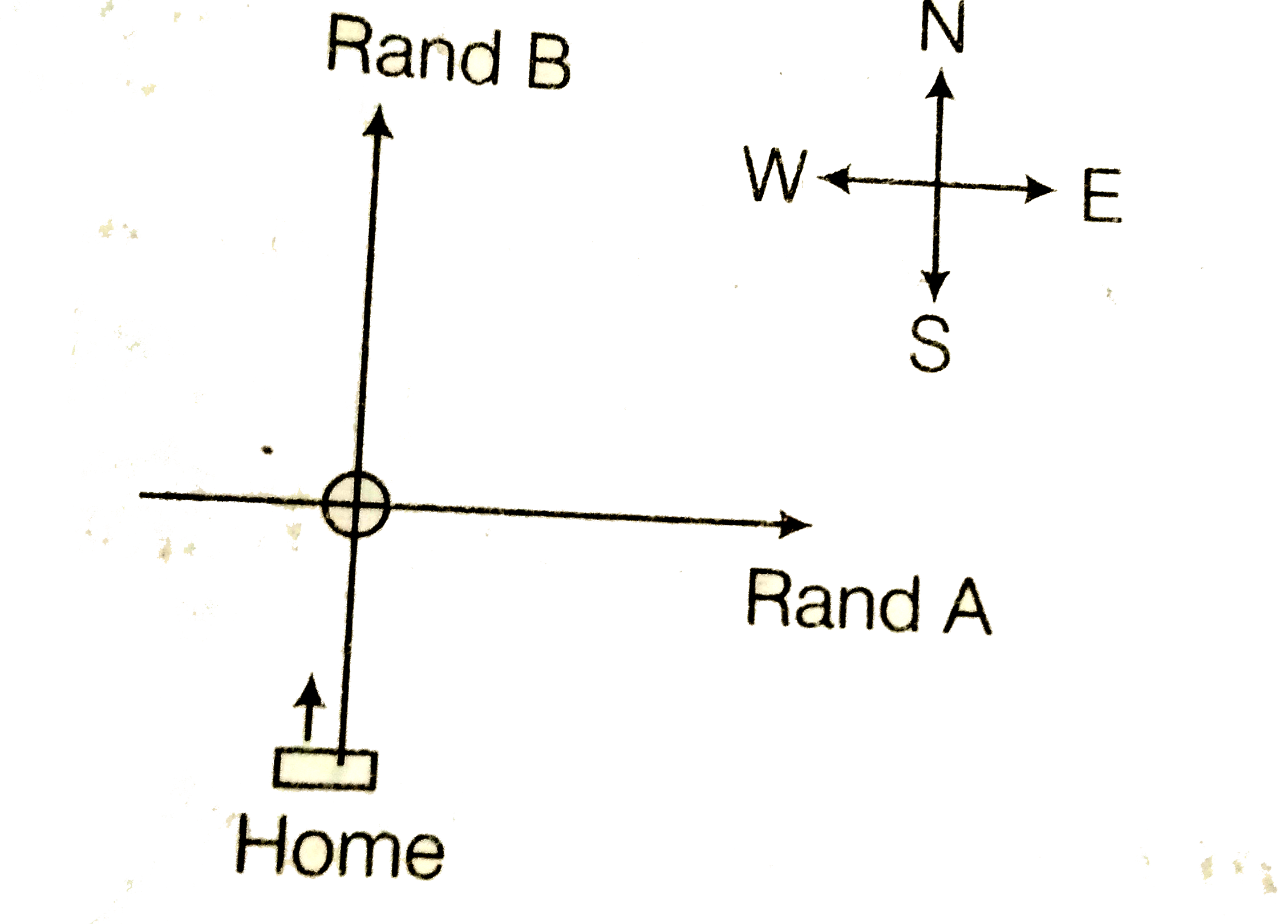Complete Solutions to EXERCISE 4 of chapter CONTINUITY AND DIFFERENTIABILITY of Class 12 book with complete answers and questions
| Class 12 | MATHS |
| Chapter | CONTINUITY AND DIFFERENTIABILITY |
| ARIHANT MATHS | EXERCISE 4 |
| Number Of Questions | 3 |
| Academic Year | 2023-24 |
A man leaves his home early in the morning to have a walk. He arrives at a junction of roads A and B as shown in figure. He takes the following steps in later journies :

(i) 1 km in North direction.
(ii) Changes direction and moves in North-East direction for `2 sqrt(2)` km.
(iii) Changes direction and moves Southwards for distance of 2 km.
(iv) Finally he changes the direction and moves in South-East direction to reach road A again.
Visible/invisible path The path traced by the man in the direction parallel to road A and road B is called invisible path, the remaining path is called visible.
Visible points The point about which the man changes direction are called visible points, except the point from where he changes direction last time.
Now if roads A and B are taken as X-asix and Y-axis, then visible point representing the graph of y = f(x).
If f(x) is periodic with period 3, then f(19) is
View SolutionA man leaves his home early in the morning to have a walk. He arrives at a junction of roads A and B as shown in figure. He takes the following steps in later journies :

(i) 1 km in North direction.
(ii) Changes direction and moves in North-East direction for `2 sqrt(2)` km.
(iii) Changes direction and moves Southwards for distance of 2 km.
(iv) Finally he changes the direction and moves in South-East direction to reach road A again.
Visible/invisible path The path traced by the man in the direction parallel to road A and road B is called invisible path, the remaining path is called visible.
Visible points The point about which the man changes direction are called visible points, except the point from where he changes direction last time.
Now if roads A and B are taken as X-asix and Y-axis, then visible point representing the graph of y = f(x).
If f(x) is periodic with period 3, then f(19) is
View SolutionA man leaves his home early in the morning to have a walk. He arrives at a junction of roads A and B as shown in figure. He takes the following steps in later journies :

(i) 1 km in North direction.
(ii) Changes direction and moves in North-East direction for `2 sqrt(2)` km.
(iii) Changes direction and moves Southwards for distance of 2 km.
(iv) Finally he changes the direction and moves in South-East direction to reach road A again.
Visible/invisible path The path traced by the man in the direction parallel to road A and road B is called invisible path, the remaining path is called visible.
Visible points The point about which the man changes direction are called visible points, except the point from where he changes direction last time.
Now if roads A and B are taken as X-asix and Y-axis, then visible point representing the graph of y = f(x).
If f(x) is periodic with period 3, then f(19) is
View Solution
EXERCISE 4 questions and complete solutions for chapter CONTINUITY AND DIFFERENTIABILITY of ARIHANT MATHS (ENGLISH) of Class 12
All Exercises from ARIHANT MATHS Class 12 MATHS CONTINUITY AND DIFFERENTIABILITY
- EXAMPLE
- Examples
- Exercise (Matching Type Questions)
- Exercise (More Than One Correct Option Type Questions)
- Exercise (Passage Based Questions)
- Exercise (Questions Asked In Previous 13 Years Exam)
- Exercise (Single Integer Answer Type Questions)
- Exercise (Single Option Correct Type Questions)
- Exercise (Statement I And Ii Type Questions)
- Exercise (Subjective Type Questions)
- EXERCISE 4
- EXERCISE 5
- EXERCISE 6
- EXERCISE 7
- Exercise For Session 1
- Exercise For Session 2
- Exercise For Session 3
- Exercise For Session 4
- Exercise For Session 5
- Exercise For Session 6
- Exercise For Session 7